
A group of British, American, and German researchers has completed the largest and most complicated brain map to date. This map details every neural connection of a fruit fly at the larval stage. After 12 years of work, they have created a comprehensive, 548,000-connection diagram of the brain. It charts the connections between 3,000 neurons and their axes, including connections between the two halves of the brain. This includes connections between the brain and the ventral nerve cord. The research provides insight into how neuronal movements result in behavior and learning.
Just so you understand how far we are from doing this with the human brain, these 3,000 neurons have over half a million connections. In contrast, the human brain has over 20 billion neurons and trillions of connections!
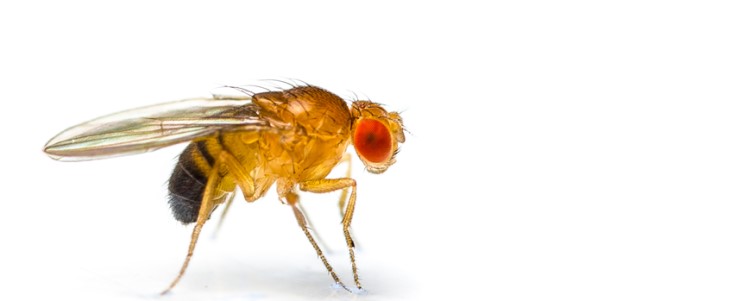
"If we want to understand who we are and how we think, part of that is understanding the mechanism of thought," says Joshua T. Vogelstein, a biomedical engineer at Johns Hopkins University. "And the key to that is knowing how neurons connect with each other."
To create this magnificent multi-functional map, researchers scanned thousands of slices of the fruit fly's brain with a high-resolution electron microscope. They then carefully connected and numbered every connection between neurons, including those that only connect in one hemisphere, in order to build a connectome.
"The way the brain circuit is structured influences the computations the brain can do," explains neuroscientist Marta Zlatic from the University of Cambridge.
"But, up until this point, we've not seen the structure of any brain except of the roundworm Caenorhabditis elegans, the tadpole of a low chordate, and the larva of a marine annelid, all of which have several hundred neurons."
Watch a video of the actual mapped brain:
The given shape represents neurons connected to one another, and the lines connecting them. The lines connecting neurons are colored differently. A connectome is a diagram of the brain that charts all of its connections. Although scientists have made significant progress charting the brain, they are currently unable to complete a connectome for large animals and humans. All brains are networks of interconnected neurons, and all brains of all species require them to perform diverse and complicated behaviors.
Drosophila melanogaster is a popular scientific research model due to its easy-to-study features, complicated yet compact brains, and many overlapping biological similarities with humans. Notably, the connecting structures observed by the researchers were determined to be most repetitive in the part of the brain that allows us to learn and remember what we've learned.
The research team suggests that the next step of their project is to learn more about the neural structure that controls certain behaviors, such as learning and decision-making, and to study the whole connectome while the fly is engaged in action.
"It's been 50 years and this is the first brain connectome. It's a flag in the sand," said Vogelstein.
"Everything has been working up to this."
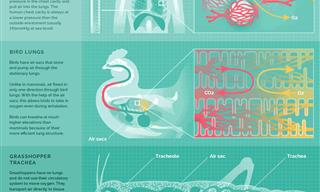
Fascinating: Three Different Ways to Breathe
Here is an infographic that presents a detailed look at different ways of breathing in three different living beings.

This New Artificial Neuron Will Help Fight Heart Failure
Read how a team of scientists invented an artificial neuron that could go on to be a major help to cure chronic neurodegenerative diseases.
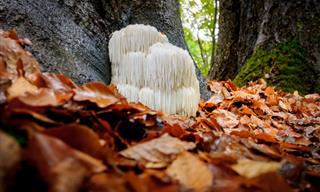
Breakthrough: Lion's Mane Mushrooms Boost Memory & Nerves!
Researchers have recently uncovered the mushroom's potent compounds, particularly hericene A, that could help nerve cells grow and better interact with each other.
 4:57
4:57
The First 3D-Printed Hotel is Already Being Built!
s evidence of this, a groundbreaking project is nearing completion, in which a hotel is being printed, and tourists will soon be able to visit it. Curious to see what it looks like?

Does Alcohol Decrease or Increase Physical Pain?
Does alcohol decrease physical pain or does it make us feel it even stronger?
 7:21
7:21
Science: 20 Mechanical Principles Demonstrated Using Lego
In this video, we'll explore a variety of fascinating mechanical mechanisms, all demonstrated using Lego models.
 9:31
9:31
The Channel Tunnel - The 7th Wonder of the Modern World!
The construction of the Channel Tunnel is said to be an impossible feat!
 19:05
19:05
What’s it Like Using a 115-Inch TV?!
This colossal 115-Inch TV will transform your viewing experience forever.

Take an Incredible Tour of Our Colossal Milky Way Galaxy
Fly Through the Milky Way Galaxy!
 21:07
21:07
15 Frightening Animals Early Humans Had to Live With
10 scary animals early cavemen in Africa had to deal with 200,000 years ago.

Scientists Develop Wrap That Determines if Food is Spoiled
Scientists at MIT have developed a biodegradable plastic-like wrap that changes color when food goes bad. Find out more…
 14:49
14:49
This Man Built an Automatic Train System for Trash Cans!
Wouldn’t it be cool if a robot picked up and moved our garbage out for pickup with the push of a button?

Wow! Who Knew That Jupiter Was So Mesmerizing?
Take a look at Jupiter like you've never seen it before!

Travel From the Sun to Pluto With Our Interactive Guide!
The solar system is a fascinating place, and we wanted to bring you an interactive journey that you can use to travel through it. Enjoy the journey!

These Photos Show How Dependent We are On Smartphones
Technology has taken over and these funny (but true) photos help to drive this fact home.

Incredible New Bionic Arm Fuses With Woman's Nerves
Karin's bionic hand is real sci fi, making her one of the first true cyborgs.
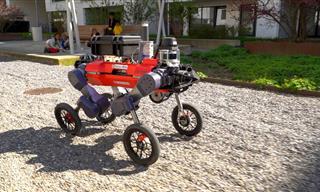 2:52
2:52
New Robots: This Robot Uses Both Wheels AND Legs
This robot can get just about anywhere in little time because it uses both wheels and legs to get over most hurdles.
 15:07
15:07
Amazing New Scientific Discoveries You Missed in 2024
There have been so many interesting scientific discoveries this year that we have missed!

Study Claims: Link Found Between Cats and Alzheimer's
Recent research has brought into focus a potentially unsettling link for cat lovers: owning a feline may increase the risk of developing schizophrenia-related disorders.
 4:13
4:13
What Does Medicine ACTUALLY Do In the Body? Fascinating.
What really happens in our bodies when we take medicine, have you ever wondered? This video will answer your question.
 4:40
4:40
Breathalyzers May Be More Important Than You Thought
This video does a great job in breaking down how in the future, breath analysis can be used to detect disease and prevent more invasive procedures.
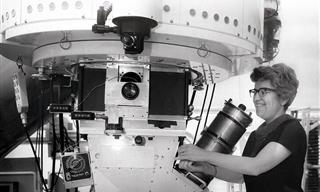
7 Overlooked Scientists Who Should Be Household Names
Meet seven scientists who never got the credit they deserved.

Ancient Skull Found In China Unlike Any Human Ever Seen
A newly-discovered skull in China had baffled scientists. This could mean we might have discovered an entirely new species of humans.

Scientists Develop 'Flying Dragon' Robot to Fight Fires
Scientists in Japan have created a water-spitting 'flying dragon' robot to fight fires.
 5:16
5:16
Fascinating: How Fast Does Our Brain Operate?
Ever wonder at what speeds our thoughts move?

Amazing Science: THIS is the True Scale of Our Universe...
Get a sense of the true scale and shape of the universe we've discovered so far.

When Under a Microscope, Even Ordinary Things Seem Alien
Have you ever given any thought to what every day things look like under a microscope? Some of these images are truly beautiful - see for yourself in the images below.

Guide: All About the Gut-Brain Connection in Your Body
it's becoming increasingly clear just how influential our tiny gut microbes are in shaping our mood and even our overall health.
 4:51
4:51
The Oldest Medicines That Have Stood the Test of Time
Learn about some fascinating old medicine and general healing practices that have survived for thousands of years.
 54:17
54:17
Science Philosophy: What is the TRUE Nature of Time?
Join us as we journey through theories, discussions, and insights that challenge our perceptions and broaden our understanding of time itself.

10 Real-Life Technologies That Science Fiction Foretold
Sometimes even the wildest science-fiction predictions about the future come true.
 6:47
6:47
7 Exciting Physics Tricks You Have to See!
Watch these seven remarkable physics tricks in this exciting and fun video.

17 Incredible Eye Facts You Have To See To Believe
They say the eyes are the window to the soul, and they also happen to be our windows to the world. Here are 17 insanely fascinating facts about eyes.
 5:50
5:50
The Rise of the Machines: Can Humanoid Robots Help Us?
Will humanoid robots change the way we work forever?
 7:15
7:15
Toilets: The Greatest Medical Advancement in Human History
While toilets make some people laugh, they are actually a deadly serious medical advancement. This video explains what toilets mean to civilization.

These Theories About Reality & the Universe Will Stun You
You will be shocked to discover these 10 surprising theories of the universe and reality.

9 Great NASA Inventions That Took the World By Storm!
For around six decades, NASA have been inventing top-notch products. Here are nine great examples!
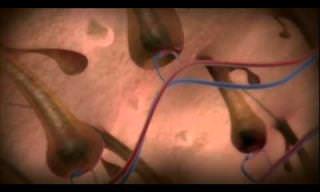 15:55
15:55
This Incredible Documentary Takes You Into the Human Body
A beautiful and graphically advanced animation sheds light on the mysteries of the human body.

There are Some Great Secrets Found in Mathematics...
Numbers hold some great secrets - they even tell us about life!

20 Fascinating Things That Can Be Found in the World
These pictures show us 20 fascinating and absolutely astounding things, from a single mountain with 1000 waterfalls to a giant ant!
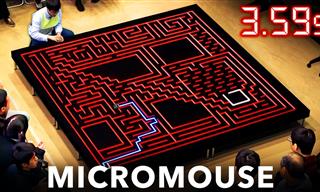
Welcome to the Fastest Maze-Solving Competition Ever Made...
Welcome to Micromouse, a competition for the quick of eyes and the quick of minds. This is the oldest robotics race.
 13:38
13:38
24 Smart Storage Inventions You Didn't Know You Needed
These super useful inventions are designed to make you help space!

10 Tech Products You Must Double-Check Before Buying
Beware! These tech products are most commonly faked.

10 Unanswered Mysteries You've Always Wondered About!
You might not have thought about the most curious cases of the bizarre things that we encounter every day.

See the World From Up Close - 17 Fascinating Macro Photos
Seeing ordinary objects like honey, paracetamol, and snow through a microscopic lens teaches us how beautiful and intricate they really are!

14 Retro Inventions That Stunned Crowds Back in the Day
These inventions were the talk of the town back in the day.
 10:01
10:01
19 Things to AVOID to Make Your Phone Live Longer
19 common mistakes we all make, that make our phones age quicker.


